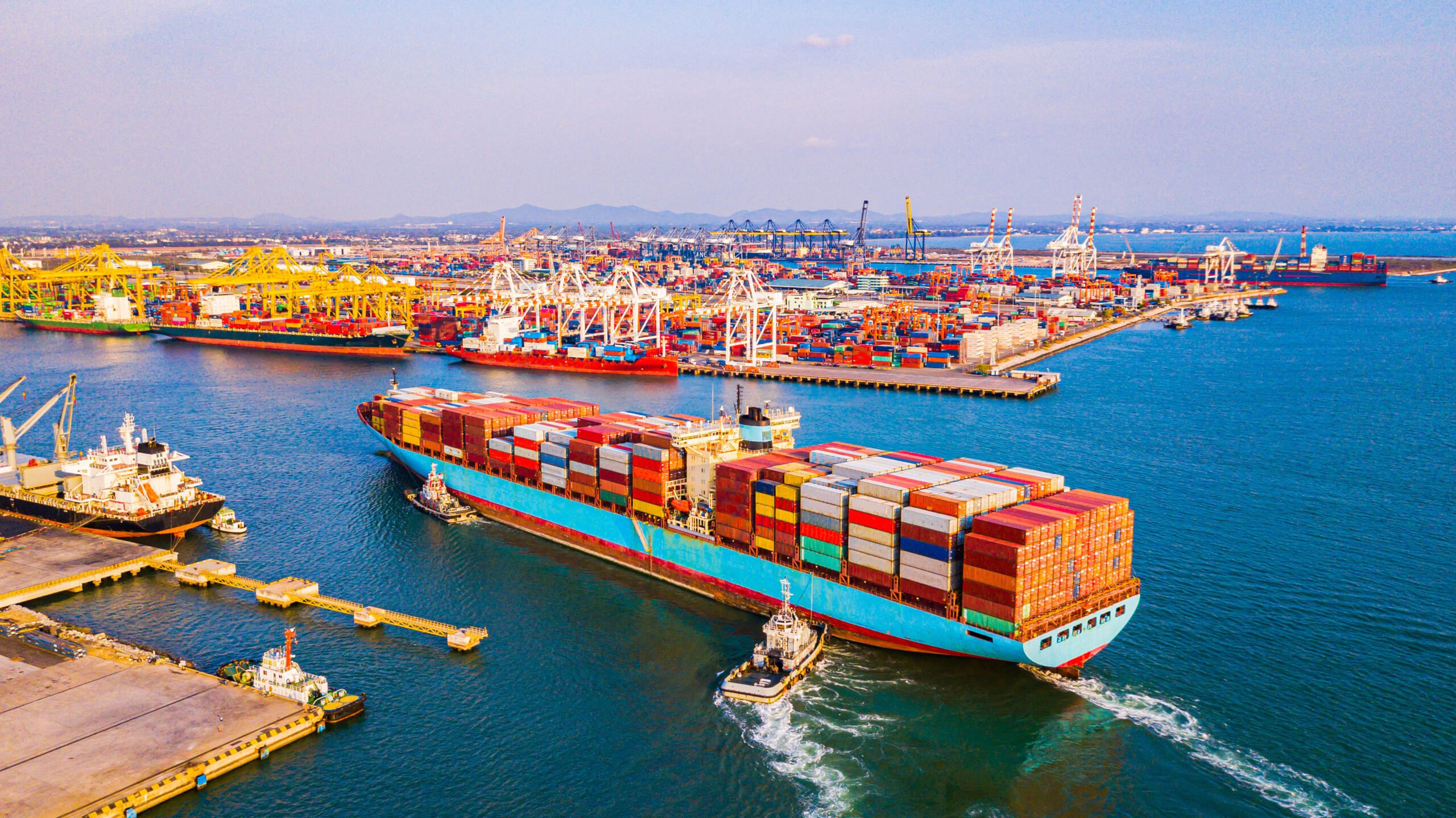Container lines are concerned about the deteriorating trading outlook for the second half of the year as tighter monetary policies dampen consumer demand.
A subdued peak season, followed by a lengthy slack period, prompting further rate erosion, will wreak havoc on the balance sheets of carriers heavily exposed to east-west trades.
They will need every last dollar of the legacy profits achieved in the first quarter to avoid finishing the full year in the red.
Indeed, container lines are already said to be racking up loss-making voyages on the transpacific, while Asia-Europe results are only being kept in the black by a robust Mediterranean market.
And the delivery of a number of 24,000 teu ultra-large vessels in the coming months, which can only be deployed on Asia-North Europe alliance loops, could start a downward spiral of rates on the tradelane, unless demand picks up significantly.
For example, according to Alphaliner, THE Alliance partners Hapag-Lloyd, ONE, Yang Ming and HMM will phase-in four new 24,000 teu ships to replace vessels of 13,400-19,870 teu on the FE3 loop in July and August.
As it stands, the timing couldn’t be worse for the introduction of new mega-ships and, moreover, the cascading of the incumbent vessels to other trades will put more downward pressure on rates on those routes.
In its June Asia Pacific market update, Maersk acknowledges that growth in H2 is “expected to be much slower than we saw over the previous six months”, and adds: “While the first half of 2023 showed the overall global economy to be more resilient than expected, sticky inflation and residual effects of previous monetary policy leave analysts worried about the second half of the year.”
In fact, it is only in its logistics business that Maersk appears optimistic about growth. According to its head of Asia Pacific ocean customer logistics, Anne-Sophie Zerlang Karlsen, last-mile logistics is taking the lead, fuelled by the rise of e-commerce across the region.
Meanwhile, consultant John McCown’s analysis of container throughput during May at the top 10 US container hub ports shows import volumes down a huge 20.1% on post-pandemic demand-driven May 2022, at 1,827,627 teu.
US east and Gulf coast ports saw a decline of 20.7% on the previous year, to 897,767 teu, while import volumes at west coast ports did slightly better, ending a run of 23 months under-performing the Atlantic coast ports and recording a drop of ‘only’ 19.6%, to 929,860 teu.
“May is the eighth straight month where total inbound volume saw a double-digit percentage decline year over year,” said Mr McCown.
Reduced demand for imports into the US from Asia, and a consequential slump in freight rates, has prompted niche carriers on the transpacific, including China United Lines and Pasha Group, to shutter their services.
Copyright: https://theloadstar.com
[/fusion_text][/fusion_builder_column][/fusion_builder_row][/fusion_builder_container]Container lines are concerned about the deteriorating trading outlook for the second half of the year as tighter monetary policies dampen consumer demand.
A subdued peak season, followed by a lengthy slack period, prompting further rate erosion, will wreak havoc on the balance sheets of carriers heavily exposed to east-west trades.
They will need every last dollar of the legacy profits achieved in the first quarter to avoid finishing the full year in the red.
Indeed, container lines are already said to be racking up loss-making voyages on the transpacific, while Asia-Europe results are only being kept in the black by a robust Mediterranean market.
And the delivery of a number of 24,000 teu ultra-large vessels in the coming months, which can only be deployed on Asia-North Europe alliance loops, could start a downward spiral of rates on the tradelane, unless demand picks up significantly.
For example, according to Alphaliner, THE Alliance partners Hapag-Lloyd, ONE, Yang Ming and HMM will phase-in four new 24,000 teu ships to replace vessels of 13,400-19,870 teu on the FE3 loop in July and August.
As it stands, the timing couldn’t be worse for the introduction of new mega-ships and, moreover, the cascading of the incumbent vessels to other trades will put more downward pressure on rates on those routes.
In its June Asia Pacific market update, Maersk acknowledges that growth in H2 is “expected to be much slower than we saw over the previous six months”, and adds: “While the first half of 2023 showed the overall global economy to be more resilient than expected, sticky inflation and residual effects of previous monetary policy leave analysts worried about the second half of the year.”
In fact, it is only in its logistics business that Maersk appears optimistic about growth. According to its head of Asia Pacific ocean customer logistics, Anne-Sophie Zerlang Karlsen, last-mile logistics is taking the lead, fuelled by the rise of e-commerce across the region.
Meanwhile, consultant John McCown’s analysis of container throughput during May at the top 10 US container hub ports shows import volumes down a huge 20.1% on post-pandemic demand-driven May 2022, at 1,827,627 teu.
US east and Gulf coast ports saw a decline of 20.7% on the previous year, to 897,767 teu, while import volumes at west coast ports did slightly better, ending a run of 23 months under-performing the Atlantic coast ports and recording a drop of ‘only’ 19.6%, to 929,860 teu.
“May is the eighth straight month where total inbound volume saw a double-digit percentage decline year over year,” said Mr McCown.
Reduced demand for imports into the US from Asia, and a consequential slump in freight rates, has prompted niche carriers on the transpacific, including China United Lines and Pasha Group, to shutter their services.
Copyright: https://theloadstar.com
[/fusion_text][/fusion_builder_column][/fusion_builder_row][/fusion_builder_container]Container lines are concerned about the deteriorating trading outlook for the second half of the year as tighter monetary policies dampen consumer demand.
A subdued peak season, followed by a lengthy slack period, prompting further rate erosion, will wreak havoc on the balance sheets of carriers heavily exposed to east-west trades.
They will need every last dollar of the legacy profits achieved in the first quarter to avoid finishing the full year in the red.
Indeed, container lines are already said to be racking up loss-making voyages on the transpacific, while Asia-Europe results are only being kept in the black by a robust Mediterranean market.
And the delivery of a number of 24,000 teu ultra-large vessels in the coming months, which can only be deployed on Asia-North Europe alliance loops, could start a downward spiral of rates on the tradelane, unless demand picks up significantly.
For example, according to Alphaliner, THE Alliance partners Hapag-Lloyd, ONE, Yang Ming and HMM will phase-in four new 24,000 teu ships to replace vessels of 13,400-19,870 teu on the FE3 loop in July and August.
As it stands, the timing couldn’t be worse for the introduction of new mega-ships and, moreover, the cascading of the incumbent vessels to other trades will put more downward pressure on rates on those routes.
In its June Asia Pacific market update, Maersk acknowledges that growth in H2 is “expected to be much slower than we saw over the previous six months”, and adds: “While the first half of 2023 showed the overall global economy to be more resilient than expected, sticky inflation and residual effects of previous monetary policy leave analysts worried about the second half of the year.”
In fact, it is only in its logistics business that Maersk appears optimistic about growth. According to its head of Asia Pacific ocean customer logistics, Anne-Sophie Zerlang Karlsen, last-mile logistics is taking the lead, fuelled by the rise of e-commerce across the region.
Meanwhile, consultant John McCown’s analysis of container throughput during May at the top 10 US container hub ports shows import volumes down a huge 20.1% on post-pandemic demand-driven May 2022, at 1,827,627 teu.
US east and Gulf coast ports saw a decline of 20.7% on the previous year, to 897,767 teu, while import volumes at west coast ports did slightly better, ending a run of 23 months under-performing the Atlantic coast ports and recording a drop of ‘only’ 19.6%, to 929,860 teu.
“May is the eighth straight month where total inbound volume saw a double-digit percentage decline year over year,” said Mr McCown.
Reduced demand for imports into the US from Asia, and a consequential slump in freight rates, has prompted niche carriers on the transpacific, including China United Lines and Pasha Group, to shutter their services.


